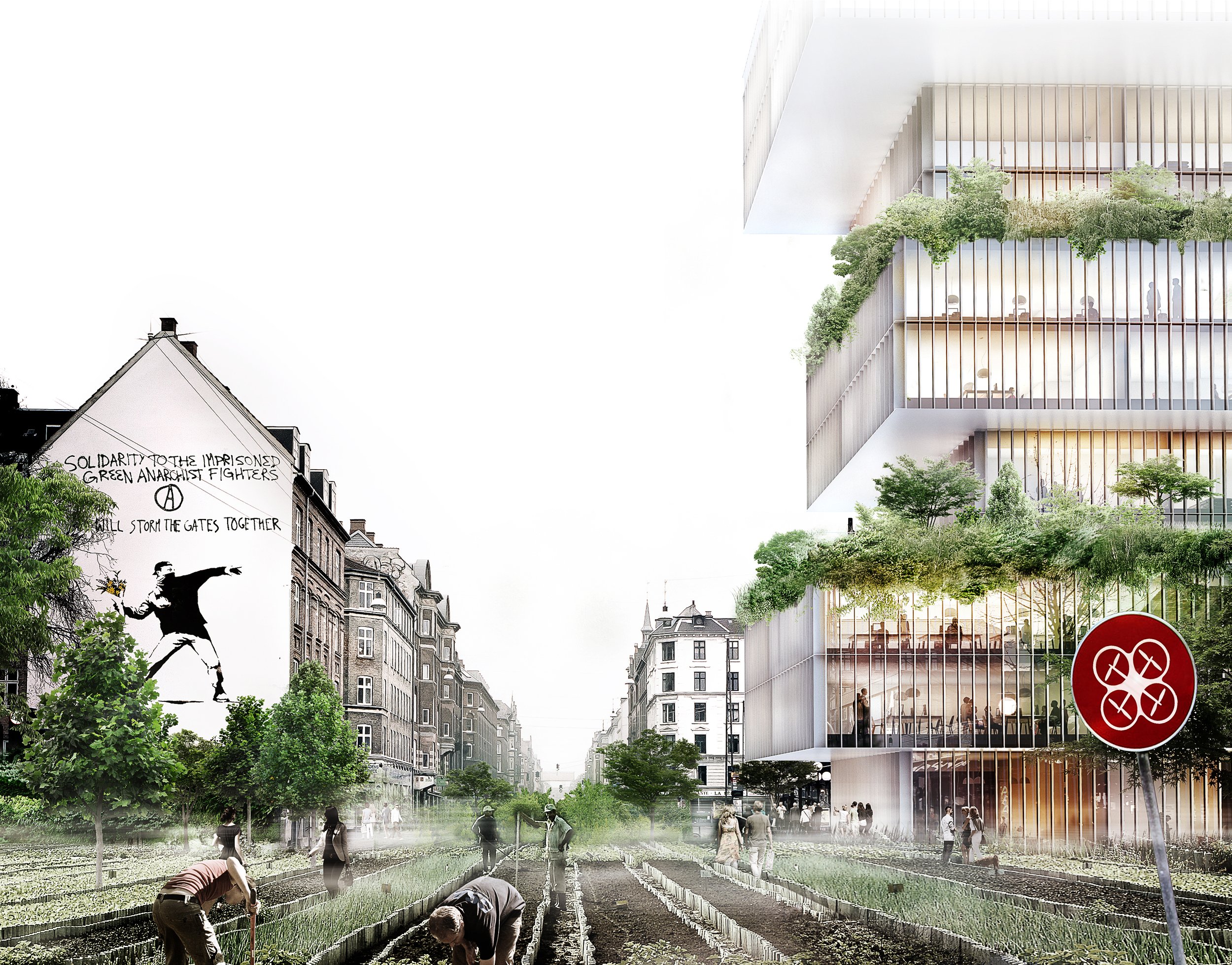
DK2050
CLIENT:
STATUS:
DAC, Realdania
Completed
2015
Denmark
Commission
Research project and strategical planning
YEAR:
LOCATION:
ASSIGNMENT:
TYPE:
-
ARCHITECTS: WE Architects
COLLABORATORS: DAC, Rambøll, Kairos Future, Damwad, Mutopia, Sleth
TEAM: Marc Jay, Julie Schmidt-Nielsen, Kasper Hansen, Kristian Hindsberg, Aude De La Barde, Maja Omerzel, Victor Johansson, Luke Lorimer
The DK2050 research project, led by the Danish Architecture Centre (DAC), aims to foster a national dialogue on creating a sustainable society and urban life, by 2050. It explores potential futures for Danish cities and regions, presenting scenarios for a healthy, sustainable environment, free from fossil fuels and full of growth opportunities across the entire country. The focus is on the opportunities ahead and the actions required today, particularly in addressing sporadic and diverse green initiatives.
WE Architecture was selected to work on the Green Guerilla scenario, which envisions a Denmark driven by grassroots green initiatives and subcultures countering a profit-driven focus on growth in Denmark. This scenario highlights the varying challenges and progress of cities like Copenhagen, Aarhus, Høje Taastrup, and Sønderborg. While some cities have leveraged green initiatives to thrive, others have struggled under the weight of rapid urbanisation over the past 35 years.
Position map: How do the four cities position themselves in the 1st, 2nd and 3rd industrial revolution?
Using a timeline approach based on industrial revolutions (past, present, and future), WE Architecture mapped key topics to project each city's trajectory toward 2050. This research underscores the potential for technology and natural resources to drive green transformation, offering diverse paths for sustainable development under the Green Guerilla vision.
"The green transition of Denmark and its cities is a massive task, and it is therefore absolutely necessary to create a new national basis for debate that can qualify our decisions. The results from the DK2050 project are based on input from a number of key stakeholders with very different perspectives on national and regional development, which gives a different result than the classic reports. Words and numbers can do a lot, but for most of us, the concrete images of the future in both large and small towns across the country will make it easier to understand the consequences of the choices we face" – says Kent Martinussen, CEO of the Danish Architecture Center.
The DK2050 project unites municipalities, ministries, regions, foundations like Realdania, and private companies to collaborate on Denmark’s green transition, providing a foundation for innovative solutions and sustainable urban growth.
More information about the project:
Fremtidens muligheder, Nutidens handlinger (in Danish, published by WE Architecture)
Partnerships for a greener Denmark in 2050 (in English, published by The Danish Architecture Centre)






